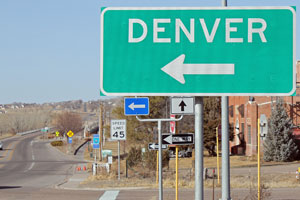Colorado to Join Road Usage Charge Experiment

“We recognize that 100 people is the very beginning stage,” said Colorado Department of Transportation spokeswoman Megan Castle. “We’re conducting this pilot to see if a program like this will be feasible in Colorado. People have a lot of questions. Some think they would be taxed twice [via road usage charges and at the pump]. Many people really aren’t aware of where their transportation funding comes from. We need to take a very thorough approach where we educate what the program is and what it isn’t.”
Like California’s program, Colorado’s research study generates only simulated charges, informing the voluntary participants what they would pay per mile compared with how much they actually pay in fuel taxes. Colorado hasn’t raised those tax rates from 20.5 cents-per-gallon on diesel and 22 cents-per-gallon on gas since 1991, in part because all tax increases in the state need approval by the voters rather than by its elected leaders.
After Colorado’s pilot ends in June, CDOT will report its conclusions about how it worked to the Legislature. But as Castle said, “We wouldn’t be doing this if we didn’t see some possibility of it continuing. Should we be asked to continue this in a larger study, including commercial trucks, would absolutely be something that would be considered.”
That’s already the case in California, where 55 trucks were sought among more than 5,000 vehicles participating.
Adam Gallagher, safety director for Devine Intermodal of West Sacramento, California, said he happily would have provided all 55 trucks just from his company. He did enroll 17 of its 150 trucks.
“We would be spending far less in fuel taxes with this type of program with miles compared to paying at the pump," he said. "Our fleet averages around 6 miles per gallon. This kind of evens the playing field for our industry. Everybody pays their fair share this way versus the transportation industry taking the brunt of it.”
California’s nine-month pilot ends on March 31, 2017. Caltrans will deliver its evaluation of the program to the Legislature three months later.
“If the Legislature ask us to continue this beyond the pilot, do we make it an opt-in program like Oregon’s?” Carrie Pourvahidi, the program’s manager, asked, “or do we say that all vehicles beginning with a certain model year or all that use a certain fuel type must participate? How much will it cost the state to implement and administer?”
Pourvahidi spoke at American Trucking Associations’ Management Conference & Exhibition in October with a friendly but skeptical reception, said Darrin Roth, ATA’s vice president for highway policy.
“While ATA believes that increasing and indexing the fuel tax is the most efficient and fair way to fund highways, we recognize that vehicle technology is evolving and eventually a new revenue source may be needed,” Roth said. “We are open to exploring alternative revenue mechanisms, including mileage-based user fees. However, it will be difficult for the trucking industry to embrace these fees until their many challenges have been resolved, including those related to high collection costs, data privacy and equitable treatment among vehicle classes.”
Oregon’s program is beyond the pilot stage and could last indefinitely. Michelle Godfrey, a spokeswoman for Oregon’s Department of Transportation, noted that the state is the only one collecting revenue from its road usage program, although in minimal amounts.
“Oregon invented the gas tax in 1919, so it’s appropriate that we’re pioneering this new method that could ultimately be the best alternative,” Godfrey said, noting that 1,288 vehicles had participated in MyOReGo and 809 were enrolled as of Nov. 1. “We expect the program to be a topic of discussion in the upcoming legislative session as part of a larger transportation funding package. The [Legislature’s] Road User Fee Task Force is recommending to the larger legislative body … requiring all vehicles to be enrolled beginning in 2025.”
Godfrey added that Oregon has received FAST Act funding to do more comprehensive research into what people think about MyOReGo and to conduct educational outreach in hopes of getting more to participate. Oregon had hoped to enroll 5,000 vehicles.
“We’re not big fans of road usage fees,” said Greg Fulton, president of the Colorado Motor Carriers Association. “Look at Oregon. They haven’t even able to get to the minimum level of vehicles, and they have virtually no rural drivers. It also polls terribly. The more information they have, the more people dislike it.”




